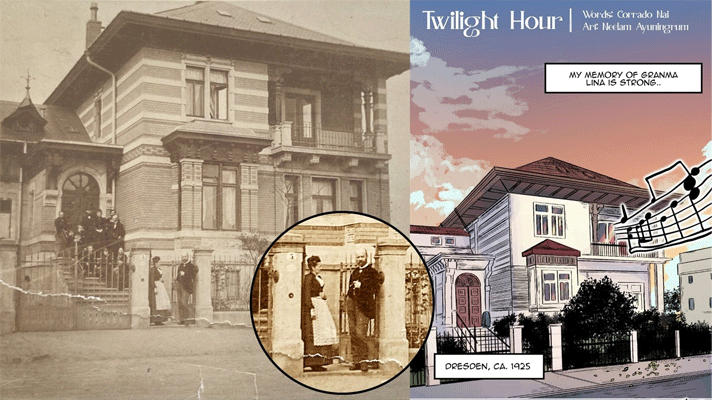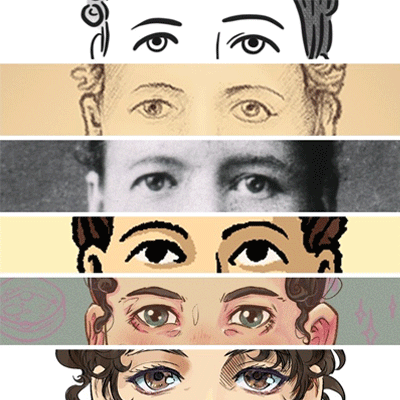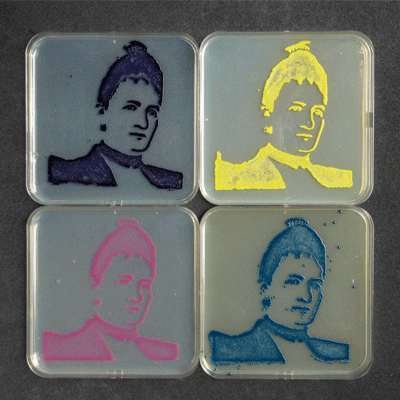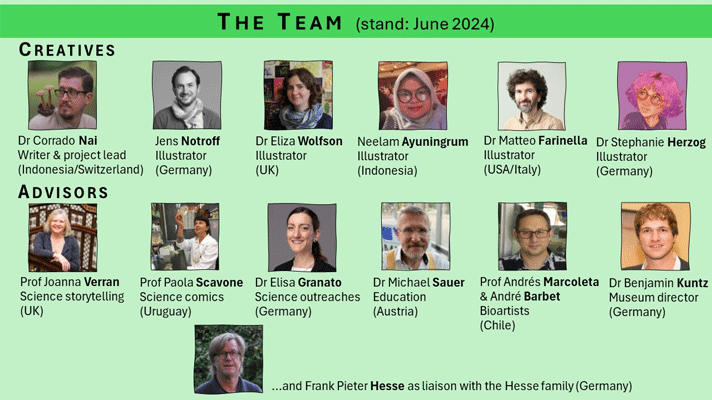Creating a graphic novel about microbiology’s forgotten woman
Posted on June 21, 2024 by Microbiology Society
On 22 June 1850, Fanny Angelina Hesse was born, and Society Champion, Corrado Nai is working on an exciting project to celebrate her 175th birthday next year. Corrado is a microbiologist and writer with a PhD in Fungal Ecology, living in Indonesia with his wife and baby daughter. Corrado has teamed up with other microbiologists and creatives to produce a graphic novel about the woman who introduced agar to microbiology.

A never before seen family portrait with Fanny Angelina and Walther Hesse in Dresden, circa 1890 (left) and concept art for the graphic novel by Neelam Ayuningrum, Indonesia (right).
As microbiologists, we are very good at dealing with the invisible. We magnify microbes, grow them and do all sorts of things with them. And we use an invisible (transparent) substance for that: agar!
But there is yet another invisible side to this story. Sadly, not many microbiologists know who the person responsible for introducing agar to the life sciences is.
Fanny Angelina Hesse (1850–1934) was this person. The American woman, with Dutch and Swiss parents, born in New Jersey (now part of New York) on 22 June 1850, married the German physician Walther Hesse. Walther spent a research stay, during the winter of 1880–81, in Berlin, at the lab of a young Robert Koch, who like any other microbiologist at the time, struggled with growing pure cultures of microbes using gelatine.
Because of her Dutch heritage, Fanny Angelina knew that desserts, in then-colonised Java (current Indonesia) contain agar, which is a superior gelling agent to gelatine. The rest is history… well, kind of.

A collage of concept art by all illustrators.
Why don’t more people know about Fanny Angelina Hesse’s monumental innovation for the life sciences? That is certainly an interesting question. The fact that, at the time of writing this, there are only three portraits and two original publications about her [1–2] online might play a role.
But an even more interesting question is whether there is something we can do about it. I believe we can, and that is why I have teamed up with a group of incredibly skilled artists, science communicators and microbiologists to create a graphic novel about Fanny Angelina Hesse.
What makes this story special?
The topic of the story is agar, and its importance then and now, with the theme of memory and how we can keep it alive. We have therefore, found surviving relatives of Fanny Angelina Hesse in Germany (her great-grandchildren), who shared unpublished historical material with us. The material will be received by the Museum of the Robert Koch Institute in Berlin so that this story can live forever!
A graphic novel really captures images beautifully. Images can bring memories to life and make the invisible visible.
We will also create some panels of ‘agar art’ created by bioartist, André Barbet (University of Chile, Chile); that is, some panels will be ‘drawn’ by microbes!
We aim to publish the novel on 22 June 2025, for the 175th anniversary of Fanny Angelina Hesse, and have created a Kickstarter campaign to raise funds. Perhaps this anniversary could one day become an awareness day in microbiology.

Agar art of Fanny Angelina Hesse created by André Barbet, Camilo Berríos-Pastén and Joaquín Acosta in the lab of Andrés Marcoleta, University of Chile. The image won the ASM Agar Art Contest in 2022.
We are a truly international and diverse team which, as a new Society Champion, I see well reflected with the wonderful activities and communities that the Microbiology Society creates.

The diverse team behind the creation of the graphic novel.
If you are interested in supporting Corrado and the rest of the team with this project, they have set up a Kickstarter campaign to raise funds, which you can donate to or share with your networks. They have also launched a Fanny Hesse graphic novel website.
References:
[1] Arthur Parker Hitchens & Morris C. Leikind (1939), The introduction of agar-agar into bacteriology, Journal of Bacteriology 37(5):485-93 (link)
[2] Wolfgang Hesse (1992), Walther and Angelina Hesse – Early Contributors to Bacteriology, ASM News 58(8):425-8 (link)
